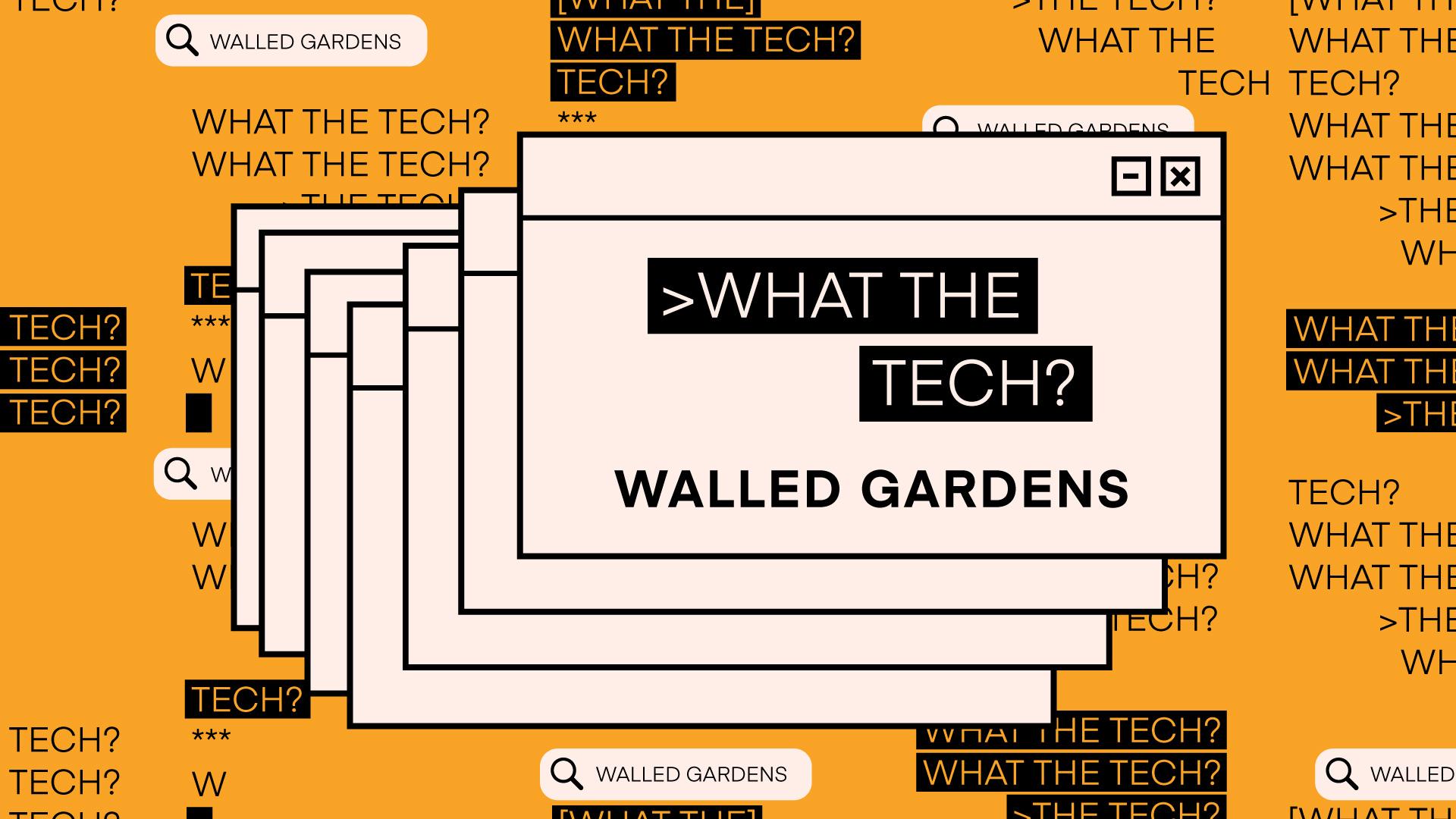What the Tech are walled gardens?

Anybody who has run a digital marketing campaign in the last several years has likely heard the term “walled gardens” thrown around and perhaps knows it’s used in reference to Google and Facebook, but you might be wondering, what are they? And why are they dominating the news cycle?
Let’s start from the beginning. Why is the term “walled gardens” used in reference to Big Tech platforms?
As the world becomes increasingly digital, data is driving key advancements in digital advertising. The ability to track an ad’s impact gives advertisers more precise views into what works and what doesn’t in their marketing plans.
This is where Google, Meta, and Amazon come in. The three giants (with Amazon forcing its way into a seat at the table in recent years) make up the majority of the revenue in the digital advertising world. They also own an expansive amount of data on their users due to the fact that the companies also operate a variety of consumer-facing services like search engines, email, social networks, video platforms, and marketplaces. Walled gardens earned the nickname as a reference to how these platforms keep their intricate mapping of consumer information — search histories, preferences (or “likes”), and networks — all locked away in their platforms, potentially as leverage to increase profits.
OK, I’m tracking. What actually is a walled garden though?
A walled garden is a closed platform or ecosystem that confines its technology and user data to its own network of owned properties. A walled garden typically does not share its data with anyone — not even with the advertisers that leverage the data. These Big Tech platforms typically control everything, from the terms of engagement to what products must be used in campaigns to what data is released. Walled gardens also have authority over which third-party solutions can be used as verification in their platforms. Advertisers trade transparency for the rich profiling and targeting capabilities they receive in return because, well, these platforms are popular among consumers.
How popular?
Amazon has over 300 million active customer accounts, according to its website. Meanwhile, Facebook reportedly has around 3 billion monthly active users worldwide, Gmail had 1.5 billion users as of 2018, YouTube has 2.5 billion active users as of 2023, and Google Search has 4.3 billion users worldwide.
Ah, I see. So, what’s the catch?
While walled gardens seem like a shiny draw for brands and publishers looking to reach precise audiences — again, thanks to the massive amount of first-party data from these platforms’ user bases — it’s not as rosy as it seems.
Walled gardens can potentially hold leverage over brands and publishers. Advertisers do not own the data and can’t verify it; therefore, they can only place faith in walled gardens to report campaign results. With a strong desire to understand their audiences and verify a return on ad spend, brands and publishers that go through the process of advertising through a walled garden can feel very much in the dark.
Big Tech has also recently found itself in hot water among legislators, as governments around the world crack down on monopolies’ control over mass markets and consumer privacy relative to data sharing and storing.
Data laws have sprung up in the U.K., along with lawsuits against Meta and Google, and in January, the U.S. Department of Justice sued Google for “monopolizing multiple digital advertising products.” Faced with this pressure, walled gardens like Google and Amazon are likely introducing data clean rooms to appease marketers, which can match pseudonymized data.
How does data privacy fit into the conversation?
Data privacy is the 800-pound gorilla in this conversation. After Meta’s Cambridge Analytica data scandal, where millions of people’s personal data was released, data privacy has come into sharper focus worldwide. With the expiration of third-party cookies expected on the horizon in 2024, first-party data is taking up more of marketers’ attention this year.
All this begs the question of how walled gardens might continue to prune their hedges, and legislators, the marketing world, and consumers are watching closely with their shears.
Subscribe to The Current
Subscribe to The Current